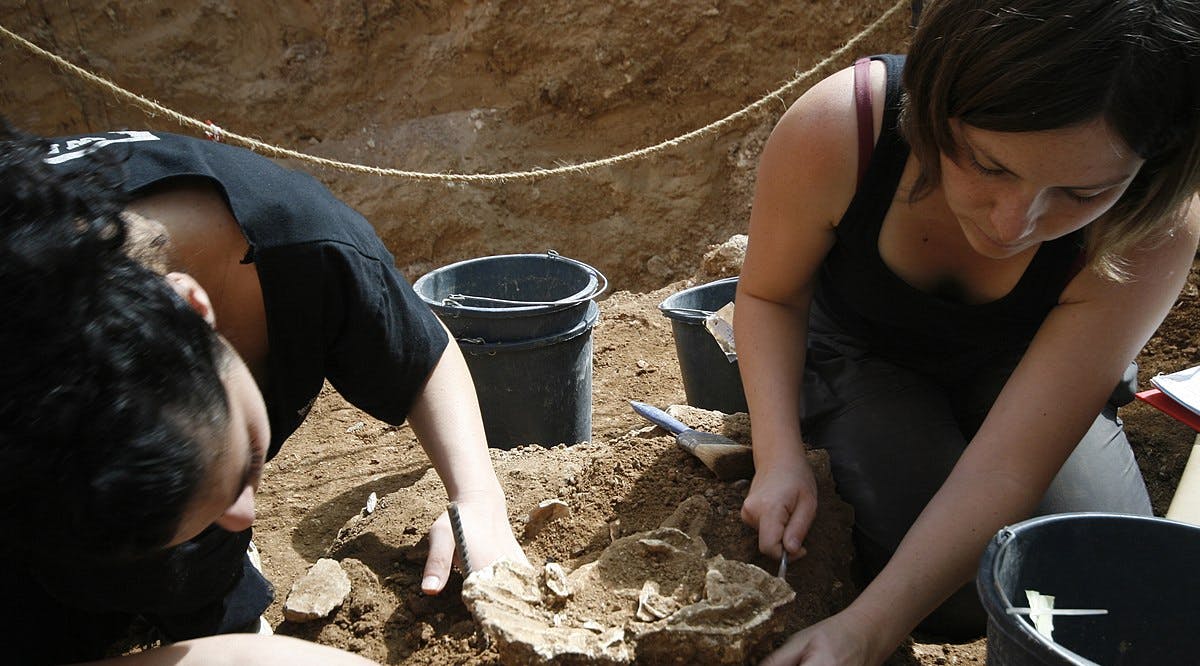
100,000-Year-Old Burial Site in Israel Reveals Complex Rituals of Early Humans
Archaeologists believe they have found one of the oldest burial sites in the world at a cave in Israel, where the well-preserved remains of early humans dating back some 100,000 years were carefully arranged in pits.
The findings at Tinshemet Cave in central Israel, published in an academic journal earlier this year, build on previous discoveries in northern Israel and add to a growing understanding of the origins of human burial.
Of particular interest to archaeologists are objects found beside the remains that may have been used during ceremonies to honor the dead and could shed light on how our ancient ancestors thought about spirituality and the afterlife.
“This is an amazing revolutionary innovation for our species,” said Yossi Zaidner, one of the directors of the Tinshemet excavation and a professor of archaeology at Hebrew University in Jerusalem. “It’s actually the first time we are starting to use this behavior.”
Archaeologists working at Tinshemet since 2016 have discovered the remains of five early humans that date back to around 110,000 to 100,000 years ago, according to various technologies.
The skeletons were discovered in pits and carefully arranged in a fetal position, which is known as a burial position, said Zaidner. Many were found with objects, such as basalt pebbles, animal remains, or fragments of ochre, a reddish pigment made from iron-rich rocks.
These objects, some sourced from hundreds of kilometers away, had no known practical use for daily life, so experts believe they were part of rituals meant to honor the dead.
Tinshemet Cave is a dark slash in central Israel’s rolling hills filled with squeaking fruit bats. Inside and around the cave is an unassuming stone mound, which Zaidner calls “one of the three or four most important sites for study of human evolution and behavior during the Paleolithic time.”
The Paleolithic era, also known as the Stone Age, lasted from as early as 3.3 million years ago until around 10,000 years ago. Tinshemet Cave is from the Middle Paleolithic era, roughly between 250,000 to 30,000 years ago.
Some of the researchers’ findings were published in Nature Human Behavior. Notable discoveries include two full skeletons, three skulls, more than 500 ochre fragments, and various tools. Archaeologists are continuing their work with precision tools and expect to be at the site for years.
(TOI/VFI News)
“Lord, may the discoveries from our land continue to unveil the rich spiritual and cultural history You've placed here. Let these findings inspire awe for Your creation and deepen appreciation for the roots of humanity.”
The suggestions, opinions, and scripture references made by VFI News writers and editors are based on the best information received.
Want to see more from VFI? Follow us on Facebook: https://www.facebook.com/visionforisrael and hit “like” if you like us!